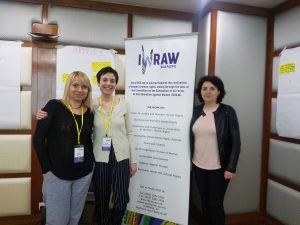
Dasha Matyushina, Drug Policy and Human Rights Advisor, EHRA
On March 2-3 2018 International Women’s Rights Action Watch Asia Pacific (IWRAW Asia Pacific) organized a workshop – which they call a ‘writeshop’, and I like this name – on developing reporting guidelines for NGOs to report to CEDAW on the violations of rights of women who use drugs.
I decided to make these 34 hours of travel to Kuala Lumpur and back for a 16 hours writeshop because of the study we have organized in Estonia in 2017. It was clear from the very beginning that the amount and harshness of the violations of rights of women who use drugs in Estonia we discovered, created an obligation upon us to produce a shadow report to CEDAW.
What IWRAW Asia Pacific does best is making you feel you are an expert in the Convention on the Elimination of All Forms of Discrimination against Women. They don’t tell you violation of which of the Convention’s articles the case implies, but they give you the text of the Convention and then you tell them whether it’s Article 12 (on health) or Article 16 (on family life).
Translating realities faced by women who use drugs into human rights language is never an easy task but having lawyers in the rooms really helps.
Deprivation of child custody solely because of drug use, which we found to be so prevalent in Estonia, violates Article 16. Non-provision of quality drug treatment services for women with children is the violation of Article 12. Arbitrary arrest and detention of women whom police know as drug users, which we surprised to discover in an EU state, violates Article 2. There is more of cause, but I will always remember CEDAW articles 2, 12 and 16.
EHRA’s research on human rights violations in the EECA will continue, and so our partnership with IWRAW Asia Pacific will. Our next field research is going to happen in St. Petersburg and Leningrad oblast in Russia – a border region with Estonia’s city Narva. We will compare the situation in Russia and Estonia through the lens of CEDAW articles – and we will probably to find more similarities between the policies of these two states that the human rights movement would expect.
